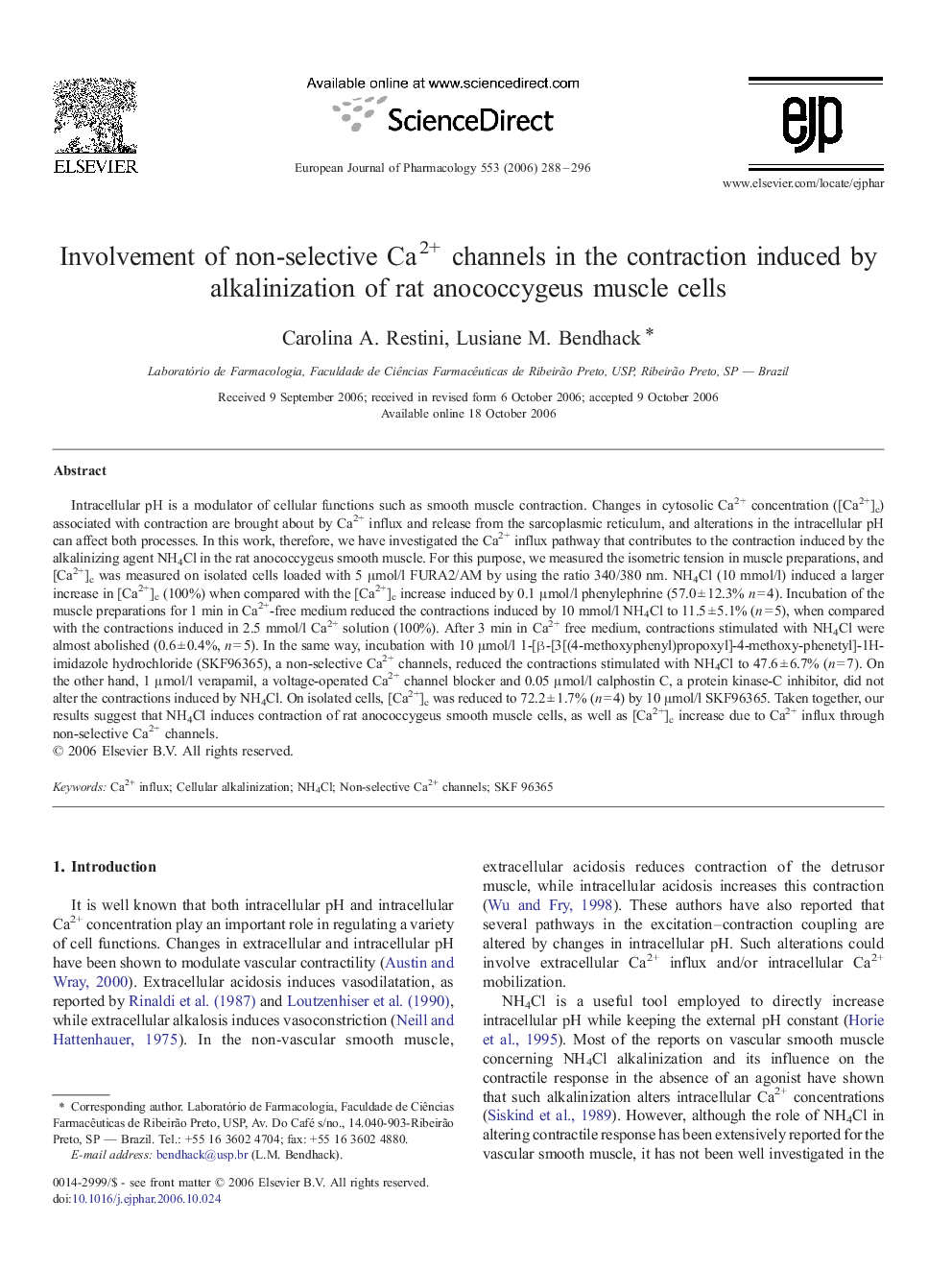| Article ID | Journal | Published Year | Pages | File Type |
|---|---|---|---|---|
| 2536581 | European Journal of Pharmacology | 2006 | 9 Pages |
Intracellular pH is a modulator of cellular functions such as smooth muscle contraction. Changes in cytosolic Ca2+ concentration ([Ca2+]c) associated with contraction are brought about by Ca2+ influx and release from the sarcoplasmic reticulum, and alterations in the intracellular pH can affect both processes. In this work, therefore, we have investigated the Ca2+ influx pathway that contributes to the contraction induced by the alkalinizing agent NH4Cl in the rat anococcygeus smooth muscle. For this purpose, we measured the isometric tension in muscle preparations, and [Ca2+]c was measured on isolated cells loaded with 5 μmol/l FURA2/AM by using the ratio 340/380 nm. NH4Cl (10 mmol/l) induced a larger increase in [Ca2+]c (100%) when compared with the [Ca2+]c increase induced by 0.1 μmol/l phenylephrine (57.0 ± 12.3% n = 4). Incubation of the muscle preparations for 1 min in Ca2+-free medium reduced the contractions induced by 10 mmol/l NH4Cl to 11.5 ± 5.1% (n = 5), when compared with the contractions induced in 2.5 mmol/l Ca2+ solution (100%). After 3 min in Ca2+ free medium, contractions stimulated with NH4Cl were almost abolished (0.6 ± 0.4%, n = 5). In the same way, incubation with 10 μmol/l 1-[β-[3[(4-methoxyphenyl)propoxyl]-4-methoxy-phenetyl]-1H-imidazole hydrochloride (SKF96365), a non-selective Ca2+ channels, reduced the contractions stimulated with NH4Cl to 47.6 ± 6.7% (n = 7). On the other hand, 1 μmol/l verapamil, a voltage-operated Ca2+ channel blocker and 0.05 μmol/l calphostin C, a protein kinase-C inhibitor, did not alter the contractions induced by NH4Cl. On isolated cells, [Ca2+]c was reduced to 72.2 ± 1.7% (n = 4) by 10 μmol/l SKF96365. Taken together, our results suggest that NH4Cl induces contraction of rat anococcygeus smooth muscle cells, as well as [Ca2+]c increase due to Ca2+ influx through non-selective Ca2+ channels.
